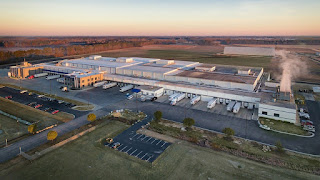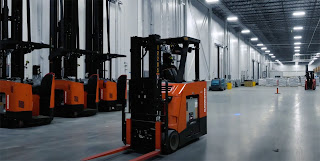Designing Human-Centric Automated Systems: Balancing Efficiency and Ergonomics
The cold storage business is a hectic field with the pressure of
productivity from all corners. But in all this, human workers' welfare
should not be disregarded. Improving productivity and guaranteeing
ergonomic safety are two difficult balancing acts in the design of
human-centric smart warehousing solutions.
A key player in this balance is the engineer, who uses data-driven
choices to create environments that are as efficient for robots as they
are for people.
When engineers watch workers, they see the
repetitive activities that can cause damage or exhaustion. They examine
motions, methods for lifting, and the resulting physical strain.
Gathering this information allows them to identify places where
automation might lighten the workload for human employees, improving
workplace safety and efficiency. Let’s understand how human-centric
development is incorporated in large warehouses.
Data-Based Decisions
Designing these systems heavily relies on data. Massive volumes of data
on worker interaction with their surroundings are gathered by
engineers. Wearables and sensors offer real-time information about
bodily motions, environmental factors, and physical stress.
For
example, automated palletizing devices are designed by engineers using
data to guarantee that these systems are set up and configured to reduce
worker mobility, improving ergonomics and productivity. Apart from
productivity, there is a big improvement in worker safety.
Incorporating Automation Carefully
Humans should benefit from technology rather than replacing it. Systems
designed by engineers flow naturally into the process. For instance,
workers can concentrate on jobs requiring human judgment and skill as
automated guided vehicles (AGVs) move goods across the warehouse.
Engineers can adjust designs to increase worker satisfaction and
productivity by watching how people use these systems.
Feedback-Based Continuous Improvement
Persistent improvement requires feedback. Workers' feedback is
routinely gathered by engineers, who then use their knowledge to improve
automated systems. Systems are certain to change in reaction to the
practical difficulties that employees encounter through this iterative
process. Engineers can make changes to these systems that increase
ergonomics and efficiency by listening to those who use them on a daily
basis. This constant communication between engineers and employees
creates a cooperative setting in warehouse automation solutions.
About Primus:
Primus is sustainable construction company
that specializes in smart automation solutions for warehouses, focusing
on efficiency and ergonomics. Their in-house team of experts designs
and builds systems that integrate well into operations. Primus enhances
productivity, safety, and scalability by providing human-centric
automated storage and retrieval systems.
For more information, visit https://www.primusbuilders.com/
.jpg)



Comments
Post a Comment